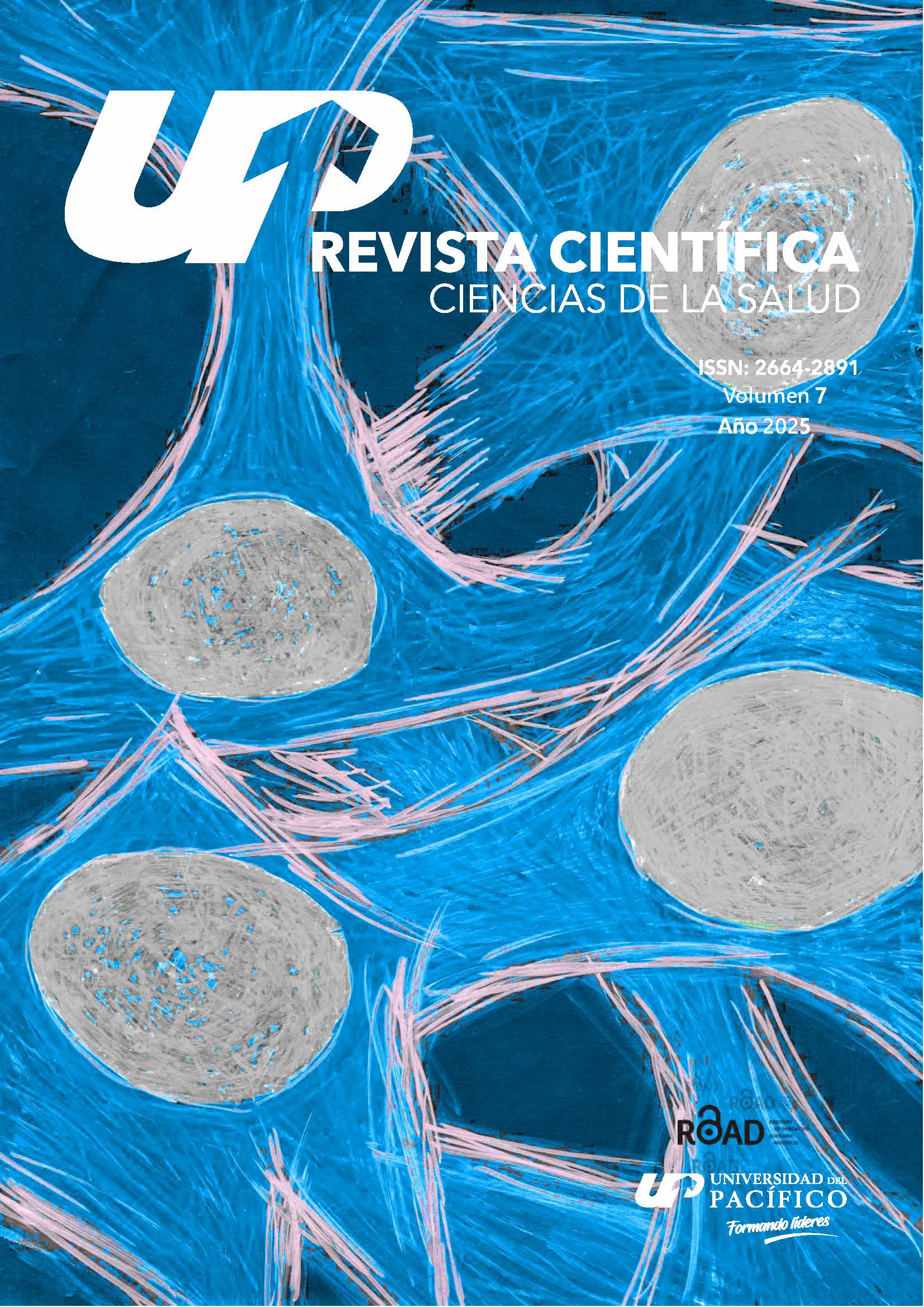Acute kidney injury in trauma patient
DOI:
https://doi.org/10.53732/rccsalud/2025.e7302Keywords:
burns, acute kidney injury, renal insufficiency, emergency treatmentAbstract
Trauma is considered one of the leading causes of mortality globally, among the complications most frequently associated with trauma is acute kidney injury triggered by hemorrhage, rhabdomyolysis, inflammation, infections or metabolic response to the surgical process. The objective is to present a narrative review on aspects related to the pathophysiological, diagnostic and therapeutic approach in trauma patients with acute kidney injury. Methods: Narrative review of relevant and outstanding articles in the area of management of the trauma patient with acute kidney injury, from different databases such as PubMed, Science Direct, Embase, EBSCO and MEDLINE. The pathophysiological mechanisms that lead the trauma patient to generate acute kidney injury have been widely described, mainly associated with processes derived from the same trauma with hematological, immune, musculoskeletal and other compromises. An initial approach should then be made from translational medicine to establish optimal therapeutic actions. An optimal approach in trauma patients with acute renal compromise can significantly improve their prognosis, as well as the complications associated with a detriment of renal function and other associated sequelae.
References
Lai WH, Rau CS, Wu SC, Chen YC, Kuo PJ, Hsu SY, et al. Post-traumatic acute kidney injury: A cross-sectional study of trauma patients. Scand J Trauma Resusc Emerg Med. 2016;24(1). https://doi.org/10.1186/s13049-016-0330-4
Harrois A, Libert N, Duranteau J. Acute kidney injury in trauma patients. Curr Opin Crit Care. 2017;23(6):447–56. https://doi.org/10.1097/MCC.0000000000000463
Perkins ZB, Haines RW, Prowle JR. Trauma-associated acute kidney injury. Curr Opin Crit Care. 2019;25(6):565–72. https://doi.org/10.1097/MCC.0000000000000655
Haines RW, Fowler AJ, Kirwan CJ, Prowle JR. The incidence and associations of acute kidney injury in trauma patients admitted to critical care: A systematic review and meta- analysis. J Trauma Acute Care Surg. 2019;86(1):141–7. https://doi.org/10.1097/TA.0000000000002085
Bagshaw SM, George C, Gibney RTN, Bellomo R. A multi-center evaluation of early acute kidney injury in critically ill trauma patients. Ren Fail. 2008;30(6):581–9. https://doi.org/10.1080/08860220802134649
Søvik S, Isachsen MS, Nordhuus KM, Tveiten CK, Eken T, Sunde K, et al. Acute kidney injury in trauma patients admitted to the ICU: a systematic review and meta-analysis. Intensive Care Med. 2019;45(4):407–19. https://doi.org/10.1007/s00134-019-05535-y
Kuok CI, Chan WKY. Motor Vehicle Collision and Acute Kidney Injury in Children. Pediatr Emerg Care. 2022;38(10):545-549. https://doi.org/10.1097/PEC.0000000000002677
Perkins ZB, Captur G, Bird R, Gleeson L, Singer B, O’Brien B. Trauma induced acute kidney injury. PLoS One. 2019;14(1). https://doi.org/10.1371/journal.pone.0211001
Skinner DL, Hardcastle TC, Rodseth RN, Muckart DJJ. The incidence and outcomes of acute kidney injury amongst patients admitted to a level i trauma unit. Injury. 2014;45(1):259–64. https://doi.org/10.1016/j.injury.2013.07.013
Hatton GE, Isbell KD, Henriksen HH, Stensballe J, Brummerstedt M, Johansson PI, et al. Endothelial Dysfunction is Associated with Increased Incidence, Worsened Severity, and Prolonged Duration of Acute Kidney Injury after Severe Trauma. Shock. 2021;55(3):311–5. https://doi.org/10.1097/SHK.0000000000001638
Giles T, Weaver N, Varghese A, Way TL, Abel C, Choi P, et al. Acute kidney injury development in polytrauma and the safety of early repeated contrast studies: A retrospective cohort study. J Trauma Acute Care Surg. 2022;93(6):872–81. https://doi.org/10.1097/TA.0000000000003735
Burmeister DM, Gómez BI, Dubick MA. Molecular mechanisms of trauma-induced acute kidney injury: Inflammatory and metabolic insights from animal models. Biochim Biophys Acta - Mol Basis Dis. 2017;1863(10):2661–71. https://doi.org/10.1016/j.bbadis.2017.04.011
Faust HE, Oniyide O, Wang Y, Forker CM, Dunn T, Yang W, et al. Early Plasma Nuclear DNA, Mitochondrial DNA, and Nucleosome Concentrations Are Associated With Acute Kidney Injury in Critically Ill Trauma Patients. Crit Care Explor. 2022;4(4):E0663. https://doi.org/10.1097/CCE.0000000000000663
Zhang Q, Raoof M, Chen Y, Sumi Y, Sursal T, Junger W, et al. Circulating mitochondrial DAMPs cause inflammatory responses to injury. Nature. 2010;464(7285):104–7. https://doi.org/10.1038/nature08780
Pottecher J, Meyer A, Wenceslau CF, Timmermans K, Hauser CJ, Land WG. Editorial: Trauma-induced, DAMP-mediated remote organ injury, and immunosuppression in the acutely Ill patient. Front Immunol. 2019;10:3389. https://doi.org/10.3389/fimmu.2019.01971
Bihorac A, Baslanti TO, Cuenca AG, Hobson CE, Ang D, Efron PA, et al. Acute kidney injury is associated with early cytokine changes after trauma. J Trauma Acute Care Surg. 2013;74(4):1005–13. https://doi.org/10.1097/TA.0b013e31828586ec
Bihorac A, Delano MJ, Schold JD, Lopez MC, Nathens AB, Maier R V., et al. Incidence, clinical predictors, genomics, and outcome of acute kidney injury among trauma patients. Ann Surg. 2010;252(1):158–65. https://doi.org/10.1097/SLA.0b013e3181deb6bc
Wang L, Song J, Buggs J, Wei J, Wang S, Zhang J, et al. A new mouse model of hemorrhagic shock-induced acute kidney injury. Am J Physiol - Ren Physiol. 2017;312(1):F134–42. https://doi.org/10.1152/ajprenal.00347.2016
Rohrig R, Rönn T, Lendemans S, Feldkamp T, De Groot H, Petrat F. Adverse effects of resuscitation with lactated ringer compared with ringer solution after severe hemorrhagic shock in rats. Shock. 2012;38(2):137–45. https://doi.org/10.1097/SHK.0b013e31825b4ed9
Ostermann M, Lumlertgul N, Jeong R, See E, Joannidis M, James M. Acute kidney injury. Lancet (London, England). 2025;405(10474):241–56. https://doi.org/10.1016/S0140-6736(24)02385-7
Akagi R, Takahashi T, Sassa S. Cytoprotective effects of heme oxygenase in acute renal failure. Contrib Nephrol. 2005;148:70–85. https://doi.org/10.1159/000086044
Hill-Kapturczak N, Chang SH, Agarwal A. Heme oxygenase and the kidney. DNA Cell Biol. 2002;21(4):307–21. https://doi.org/10.1089/104454902753759726
Stec DE, Vera T, Storm M V., McLemore GR, Ryan MJ. Blood pressure and renal blow flow responses in heme oxygenase-2 knockout mice. Am J Physiol - Regul Integr Comp Physiol. 2009;297(6):2–3. https://doi.org/10.1152/ajpregu.00319.2009
Tornatore L, Thotakura AK, Bennett J, Moretti M, Franzoso G. The nuclear factor kappa B signaling pathway: Integrating metabolism with inflammation. Trends Cell Biol. 2012;22(11):557–66. https://doi.org/10.1016/j.tcb.2012.08.001
Lenz A, Franklin GA, Cheadle WG. Systemic inflammation after trauma. Injury. 2007;38(12):1336–45. https://doi.org/10.1016/j.injury.2007.10.003
Enkhbaatar P, Wang J, Saunders F, Lange M, Hamahata A, Rehberg S, et al. Mechanistic aspects of inducible nitric oxide synthase-induced lung injury in burn trauma. Burns. 2011;37(4):638–45. https://doi.org/10.1016/j.burns.2010.12.011
Makris K, Markou N, Evodia E, Dimopoulou E, Drakopoulos I, Ntetsika K, et al. Urinary neutrophil gelatinase-associated lipocalin (NGAL) as an early marker of acute kidney injury in critically ill multiple trauma patients. Clin Chem Lab Med. 2009;47(1):79–82. https://doi.org/10.1515/CCLM.2009.004
Owattanapanich N, Chittawatanarat K, Benyakorn T, Sirikun J. Risks and benefits of hypotensive resuscitation in patients with traumatic hemorrhagic shock: A meta-analysis. Scand J Trauma Resusc Emerg Med. 2018;26(1):1–2. https://doi.org/10.1186/s13049-018-0572-4
Asfar P, Meziani F, Hamel JF, Grelon F, Megarbane B, Anguel N, et al. High versus Low Blood-Pressure Target in Patients with Septic Shock. N Engl J Med. 2014;370(17):1583–93. https://doi.org/10.1056/nejmoa1312173
Young P, Bailey M, Beasley R, Henderson S, Mackle D, McArthur C, et al. Effect of a buffered crystalloid solution vs saline on acute kidney injury among patients in the intensive care unit: The SPLIT randomized clinical trial. JAMA - J Am Med Assoc. 2015;314(16):1701–10. https://doi.org/10.1001/jama.2015.12334
Young JB, Utter GH, Schermer CR, Galante JM, Phan HH, Yang Y, et al. Saline versus plasma-lyte A in initial resuscitation of trauma patients: A randomized trial. Ann Surg. 2014;259(2):255–62. https://doi.org/10.1097/SLA.0b013e318295feba
Hatton GE, Du RE, Wei S, Harvin JA, Finkel KW, Wade CE, et al. Positive Fluid Balance and Association with Post-Traumatic Acute Kidney Injury. J Am Coll Surg. 2020;230(2):190-199.e1. https://doi.org/10.1016/j.jamcollsurg.2019.10.009
Roger C, Muller L, Deras P, Louart G, Nouvellon E, Molinari N, et al. Does the type of fluid affect rapidity of shock reversal in an anaesthetized-piglet model of near-fatal controlled haemorrhage? A randomized study. Br J Anaesth. 2014;112(6):1015–23. https://doi.org/10.1093/bja/aet375
Orbegozo Cortés D, Gamarano Barros T, Njimi H, Vincent JL. Crystalloids versus colloids: Exploring differences in fluid requirements by systematic review and meta-regression. Anesth Analg. 2015;120(2):389–402. https://doi.org/10.1213/ANE.0000000000000564
Qureshi SH, Rizvi SI, Patel NN, Murphy GJ. Meta-analysis of colloids versus crystalloids in critically ill, trauma and surgical patients. Br J Surg. 2016;103(1):14–26. https://doi.org/10.1002/bjs.9943
Annane D, Siami S, Jaber S, Martin C, Elatrous S, Declère AD, et al. Effects of fluid resuscitation with colloids vs crystalloids on mortality in critically ill patients presenting with hypovolemic shock - The CRISTAL randomized trial. Jama. 2013;310(17):1809–17. https://doi.org/10.1001/jama.2013.280502
Sawhney JS, Kasotakis G, Goldenberg A, Abramson S, Dodgion C, Patel N, et al. Management of rhabdomyolysis: A practice management guideline from the Eastern Association for the Surgery of Trauma. Am J Surg. 2022;224(1):196–204. https://doi.org/10.1016/j.amjsurg.2021.11.022
Brown CVR, Rhee P, Chan L, Evans K, Demetriades D, Velmahos GC. Preventing renal failure in patients with rhabdomyolysis: Do bicarbonate and mannitol make a difference? J Trauma - Inj Infect Crit Care. 2004;56(6):1191–6. https://doi.org/10.1097/01.TA.0000130761.78627.10
Haines RW, Lin SP, Hewson R, Kirwan CJ, Torrance HD, O’Dwyer MJ, et al. Acute Kidney Injury in Trauma Patients Admitted to Critical Care: Development and Validation of a Diagnostic Prediction Model. Sci Rep. 2018;8(1). https://doi.org/10.1038/s41598-018-21929-2
Beitland S, Moen H, Os I. Acute kidney injury with renal replacement therapy in trauma patients. Acta Anaesthesiol Scand. 2010;54(7):833–40. https://doi.org/10.1111/j.1399-6576.2010.02253.x
Zarbock A, Kellum JA, Schmidt C, Van Aken H, Wempe C, Pavenstädt H, et al. Effect of early vs delayed initiation of renal replacement therapy on mortality in critically ill patients with acute kidney injury: The elain randomized clinical trial. JAMA - J Am Med Assoc. 2016;315(20):2190–9. https://doi.org/10.1001/jama.2016.5828
Gaudry S, Hajage D, Schortgen F, Martin-Lefevre L, Pons B, Boulet E, et al. Initiation Strategies for Renal-Replacement Therapy in the Intensive Care Unit. N Engl J Med. 2016;375(2):122–33. https://doi.org/10.1056/nejmoa1603017
Published
How to Cite
Issue
Section
License
Copyright (c) 2025 Revista científica ciencias de la salud

This work is licensed under a Creative Commons Attribution 4.0 International License.






















 All the contents of this journal are licensed under a
All the contents of this journal are licensed under a 